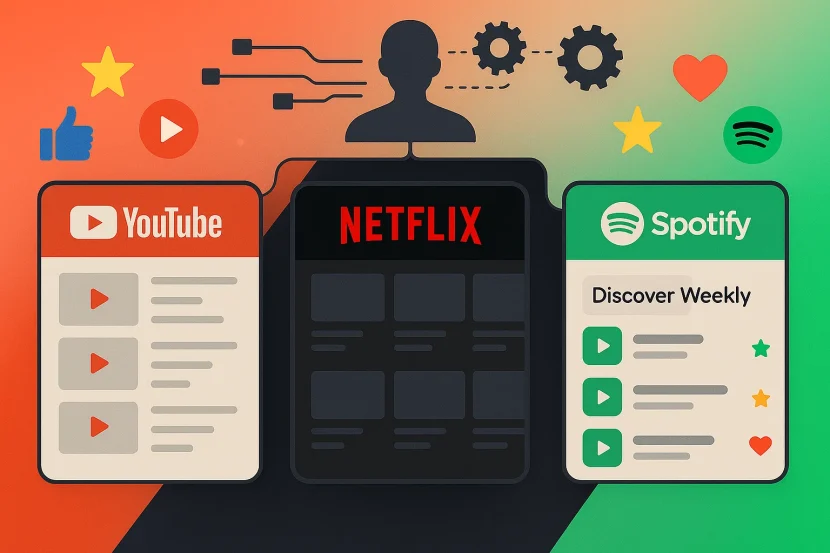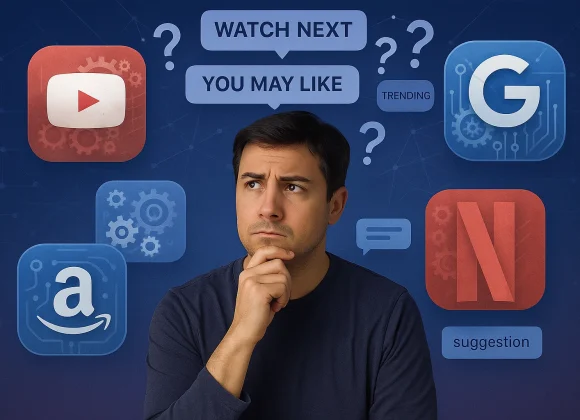If YouTube has ever surprised you with spot-on video suggestions or Netflix seems to predict your next binge-worthy show, you’ve already seen recommendation systems at work. These smart engines drive the platforms we use every day, relying on complex data and constantly evolving algorithms that learn from your behavior to personalize your experience.
What Is a Recommendation System?
A recommendation system is a type of software that filters and ranks content based on your behavior, preferences, and patterns. It helps you find what you like (or what the platform wants you to like) without you even asking.
Think of it as a smart assistant that observes what you watch, skip, like, or listen to—and uses that to guess your next favorite thing.
YouTube: The Engagement King
YouTube builds its recommendation system around engagement—it tracks which videos you click, how long you watch them, what you like or comment on, and your search history.
How it works:
- Click-through rate: Do you click on a suggested video?
- Watch time: Do you stay for a few seconds or watch the whole video?
- Session patterns: What kinds of videos do you binge?
- Feedback loops: If you dislike or block a video, YouTube updates your preferences.
📌 Example: Watch two cooking tutorials, and suddenly your homepage is filled with recipes, kitchen hacks, and food vloggers.
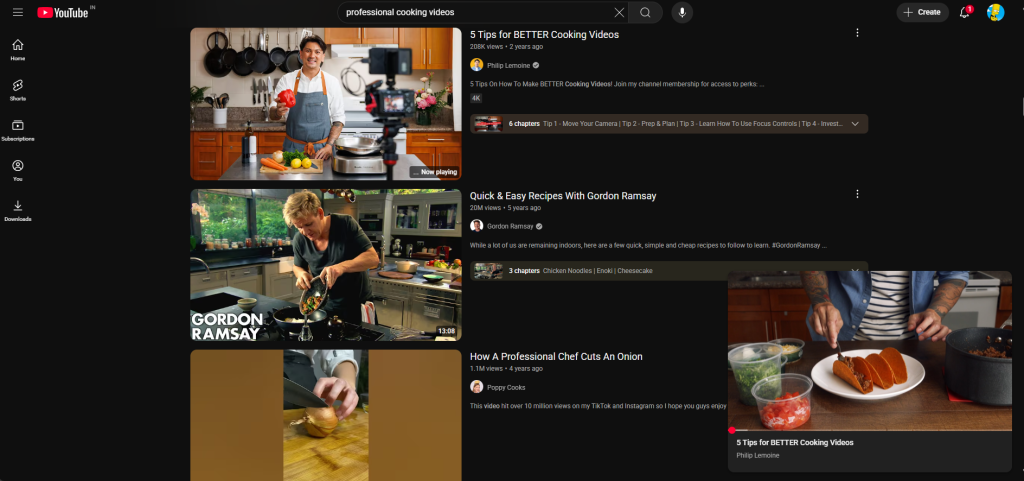
Netflix: Personalizing at Scale
Netflix uses a mix of collaborative filtering and content-based filtering to suggest shows. It analyzes what you and people similar to you have watched—and then recommends content based on those patterns.
How it works:
- Viewing history: Your past watching behavior
- Ratings and skips: What you finish, pause, or abandon
- Genre preferences: Romantic comedies? Crime dramas? Animated shows?
- Time of day: Yes, Netflix knows if you’re a night binge-watcher.
📌 Example: You watch 3 murder mystery series—Netflix lines up Mindhunter, You, and The Fall next.
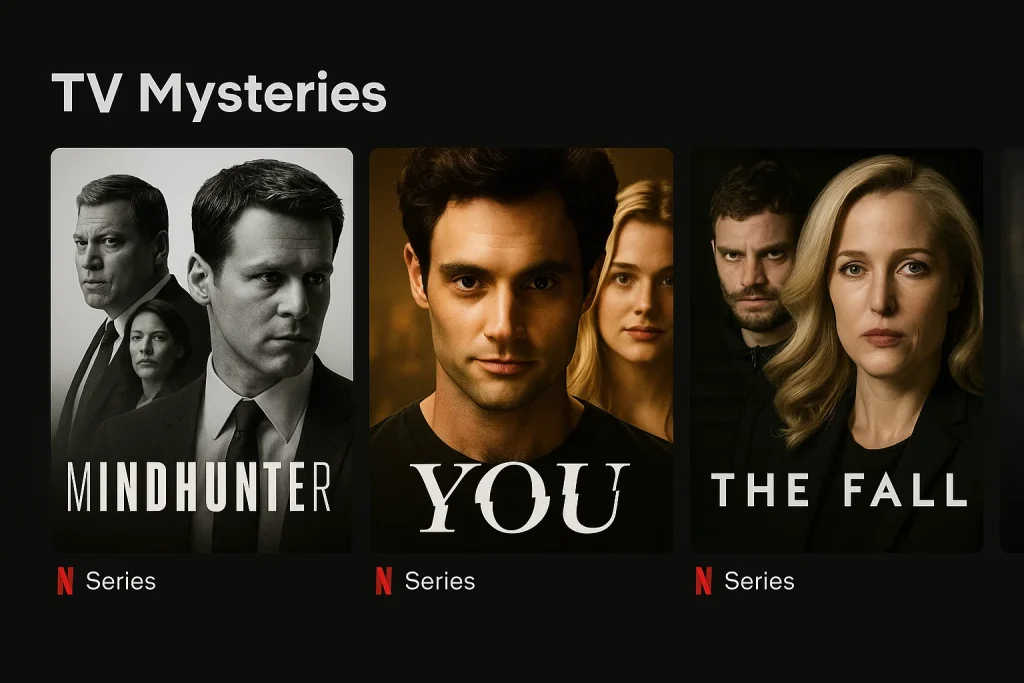
Spotify: Discovery Meets Machine Learning
Spotify’s recommendation engine is famous for features like Discover Weekly and Daily Mixes, driven by deep machine learning models.
How it works:
- Collaborative filtering: Listeners like you also liked…
- Audio analysis: The system breaks songs into components like tempo, genre, energy
- Natural language processing (NLP): Even blog posts, reviews, and song metadata affect suggestions
📌 Example: Listen to chill lo-fi beats? Spotify suggests artists with similar rhythms, vibes, or lyrics—even new ones you’ve never heard.
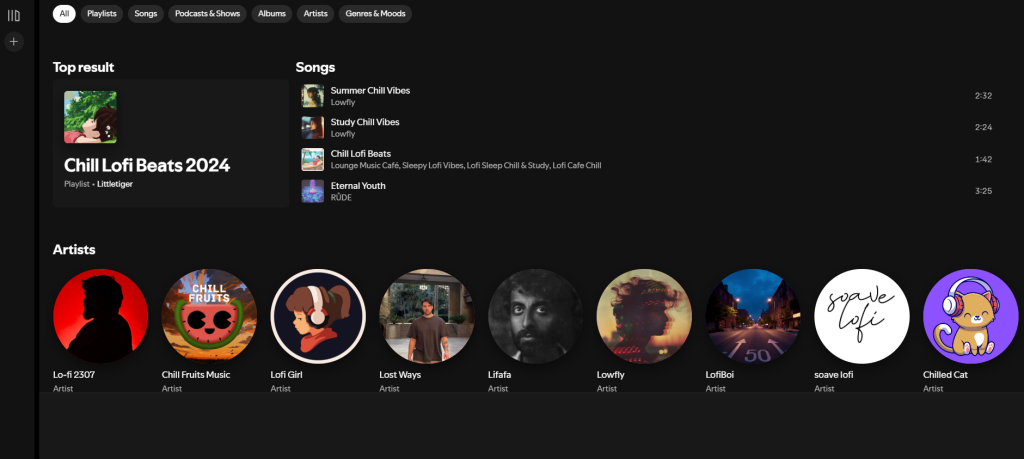
Why These Systems Matter
Recommendation systems do more than just help—they power platforms that serve millions of users and billions of content pieces. They save your time, keep you engaged, boost your satisfaction, and help businesses grow by increasing views and extending subscriptions. These systems also give creators a better chance to reach the right audience, especially when the algorithm favors their niche or content style.
But There’s a Dark Side
- Filter bubbles: You see only what the system thinks you’ll like—no surprises, no new viewpoints
- Addictive loops: Platforms may push you toward sensational content to keep you watching/listening longer
- Lack of transparency: Most platforms don’t reveal exactly how their algorithms work
🧠 Tip: Break the bubble by searching for diverse content or exploring sections beyond your home feed.
Final Thoughts
Whether you’re streaming a podcast, watching a tutorial, or binging a show, recommendation systems are always working behind the scenes. They learn from your clicks, listens, and habits to deliver content that’s uniquely suited to you. Understanding how they work gives you more control—and helps you use these platforms more mindfully.

